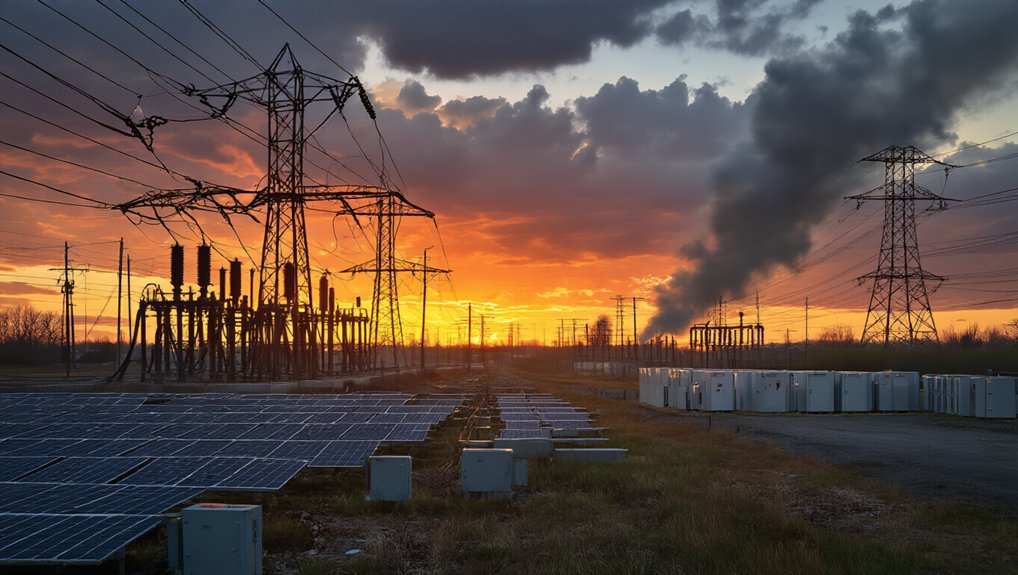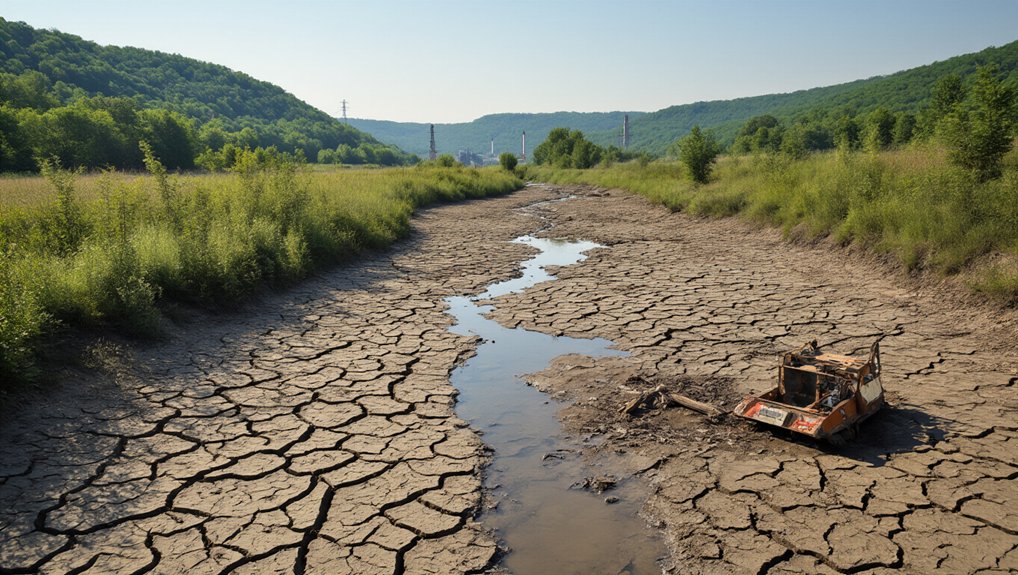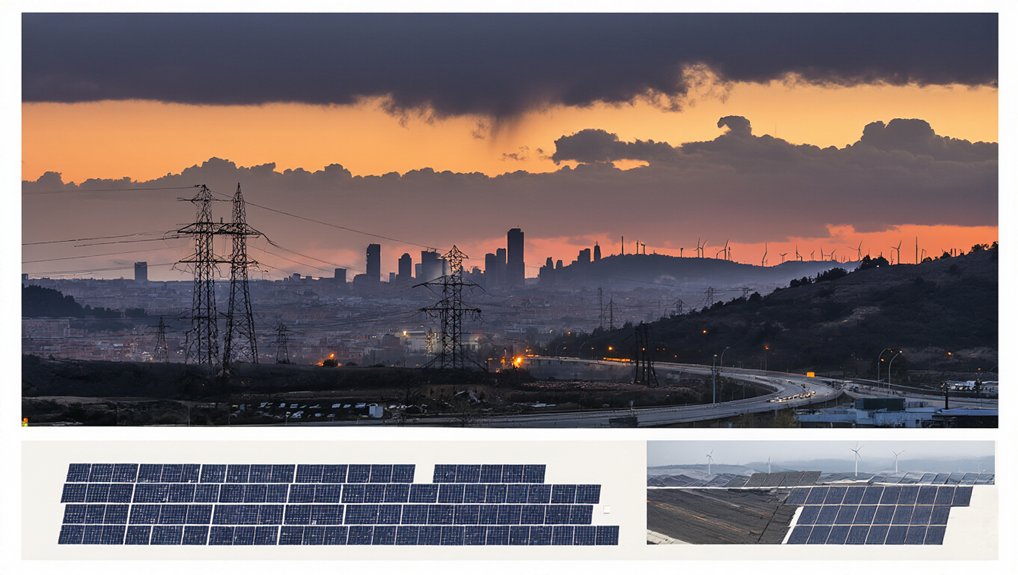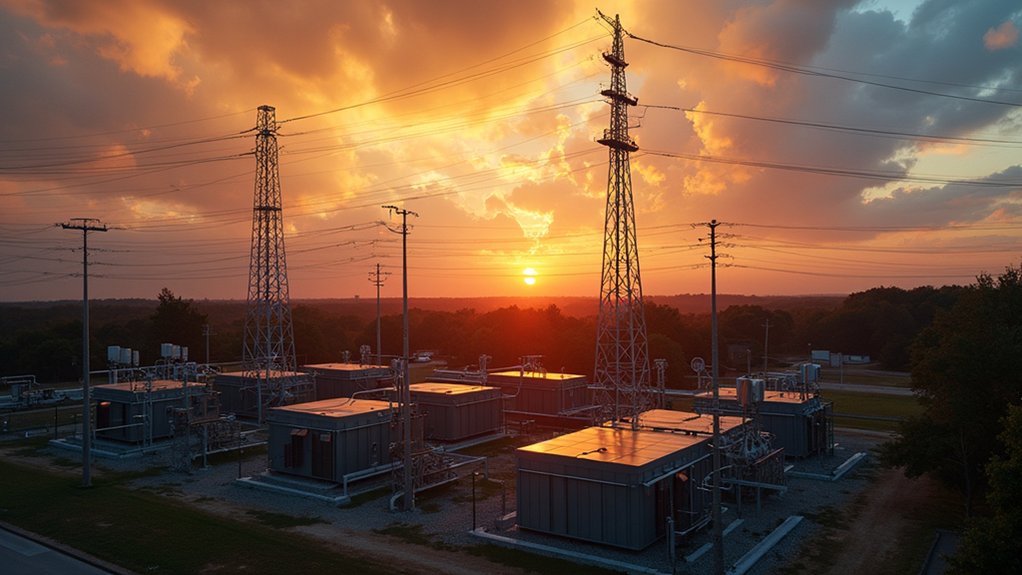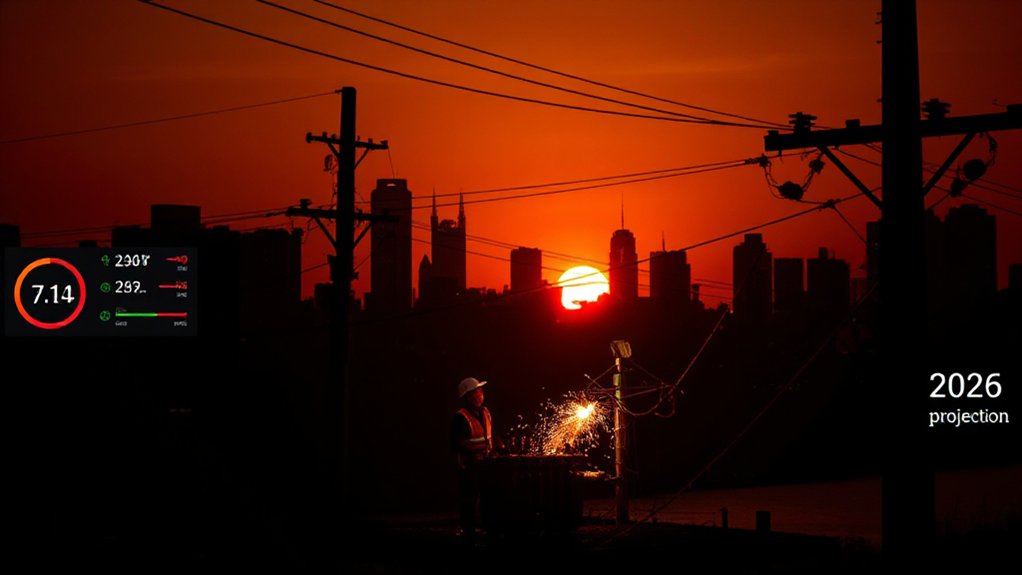While California’s battery storage surged past 13,000 megawatts and solar installations shattered records, America’s power grid started showing its age. The numbers look impressive on paper. More than 36 gigawatts of solar capacity coming online in 2024. Clean energy breaking records left and right.
But here’s the thing nobody wants to talk about: 70 percent of transmission lines and transformers are pushing past 30 years old. Grid operators aren’t sleeping well these days. NERC determined there’s elevated risk, and they’re not exactly known for crying wolf. They ran the numbers on plausible scenarios, including those 90/10 demand forecasts that keep utility executives up at night. The math doesn’t lie. Electricity demand keeps climbing thanks to data centers, manufacturing coming back home, and everyone suddenly wanting electric everything.
California thinks they’ve cracked the code. They added 20,000 megawatts of clean energy since 2021. Battery storage jumped from 700 megawatts to over 13,000. Pretty slick, right? They even kept Diablo Canyon running and built a 4,000-megawatt Strategic Reliability Reserve.
Battery discharges hit 8,000 megawatts in October. Solar peaked at 19,600 megawatts. The Western Energy Imbalance Market lets states share resources when things get tight. Clean energy resources can provide essential reliability services that keep the lights on when traditional plants go offline.
But the shift isn’t exactly smooth sailing. Climate change keeps throwing extreme heat events at the grid like a pitcher with a grudge. Those aging transformers and transmission lines weren’t built for this. The dramatic coal plant closures across the country—over 780 since 2000—are outpacing grid modernization efforts. They’re trying to reimagine how to run a clean system while the equipment falls apart. Slow-moving institutions clash with outdated reliability views. It’s like trying to upgrade a plane’s engine mid-flight.
Electric vehicles barely scratch the surface at 0.25 percent of electricity consumption. That’s 11 terawatt-hours for those keeping score. California’s battery storage captures solar during the day and releases it when everyone gets home and cranks up the AC. Smart? Sure. Enough? That’s the billion-dollar question.
The grid needs more than good intentions and press releases. Balancing fossil plant retirements with new capacity while dodging infrastructure failures isn’t exactly child’s play. Summer 2025 looms large.
References
- https://energyinnovation.org/report/grid-reliability-in-the-clean-energy-transition/
- https://www.nerc.com/pa/RAPA/ra/Reliability Assessments DL/NERC_SRA_2025.pdf
- https://infrastructurereportcard.org/wp-content/uploads/2025/03/Energy.pdf
- https://ember-energy.org/app/uploads/2025/03/US-Electricity-2025-Special-Report.pdf
- https://www.energy.ca.gov/news/2025-05/california-energy-leaders-report-progress-grid-reliability-ahead-summer-2025
